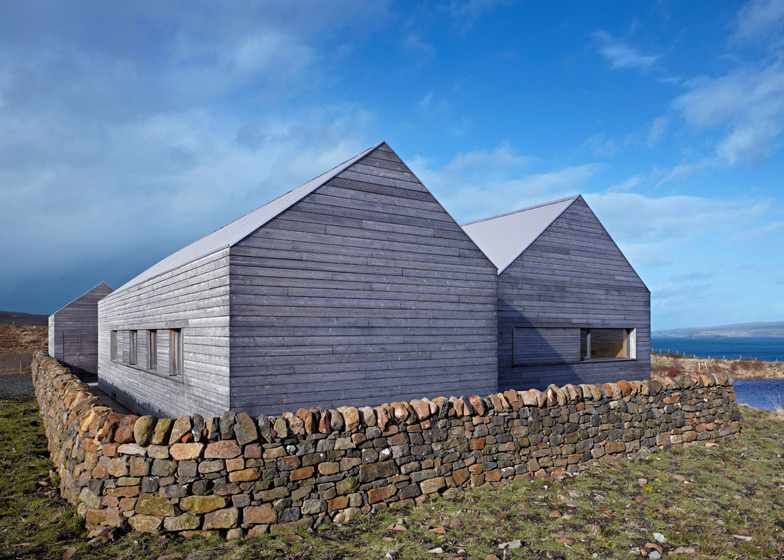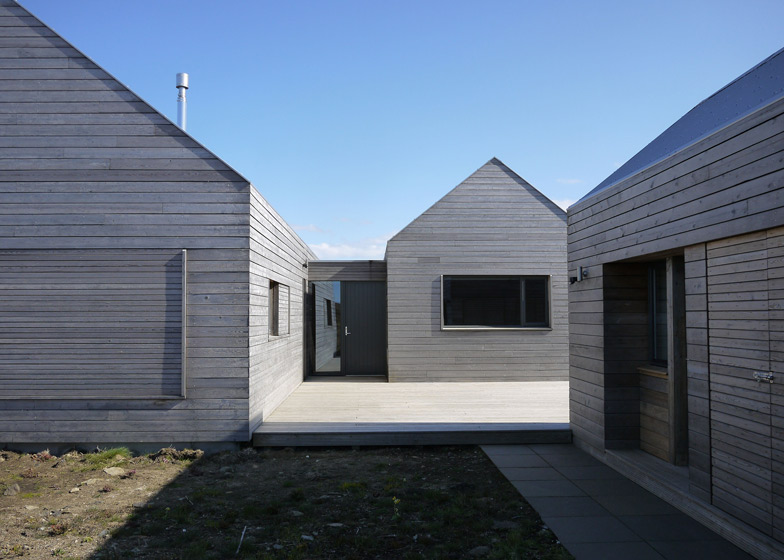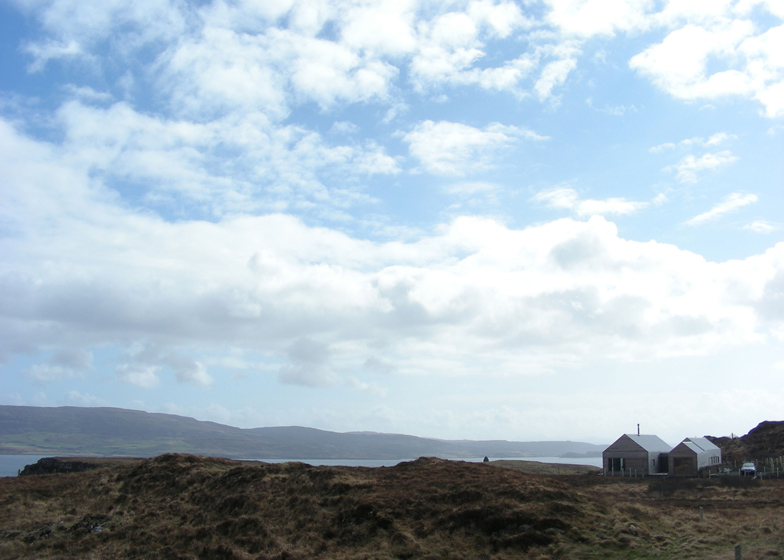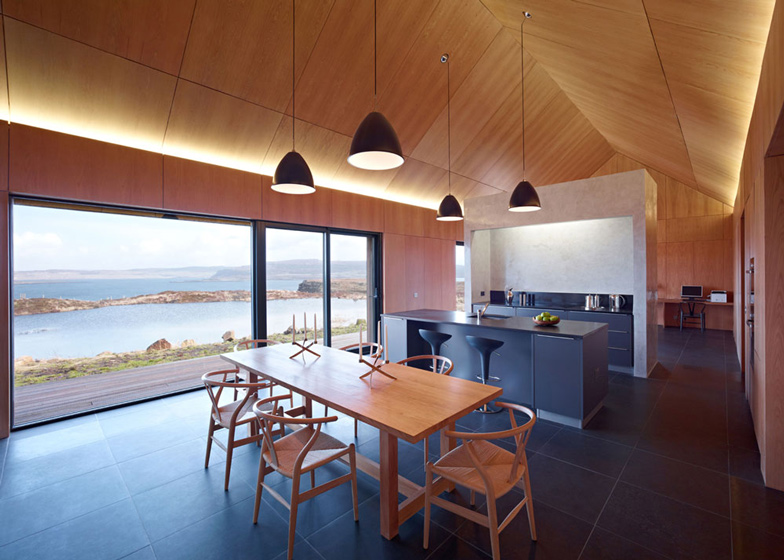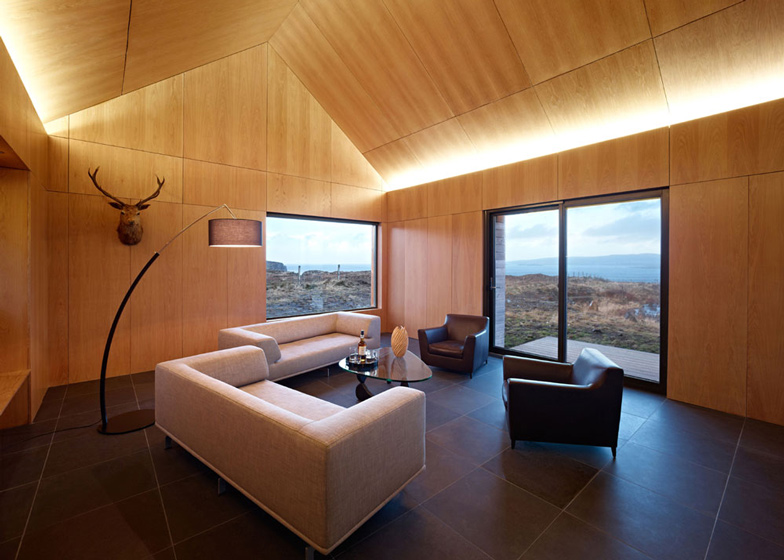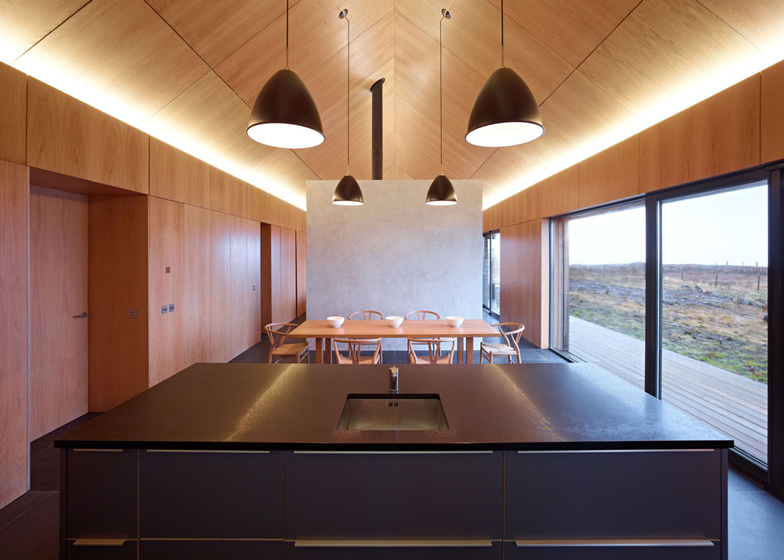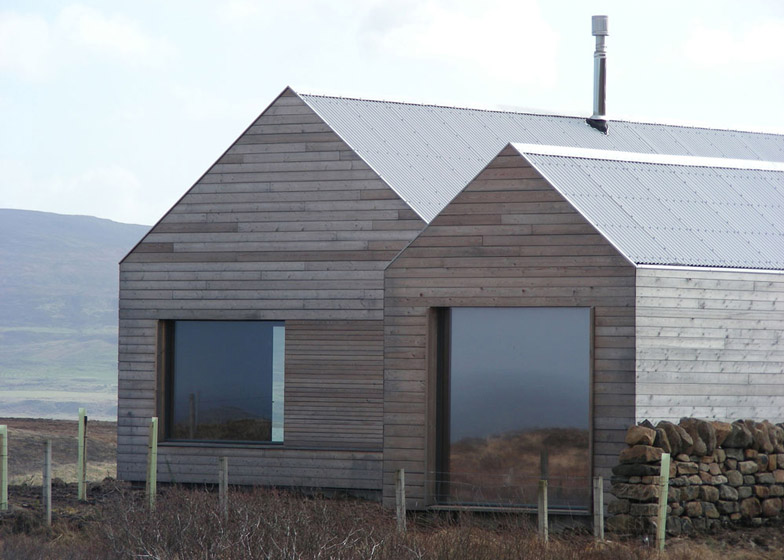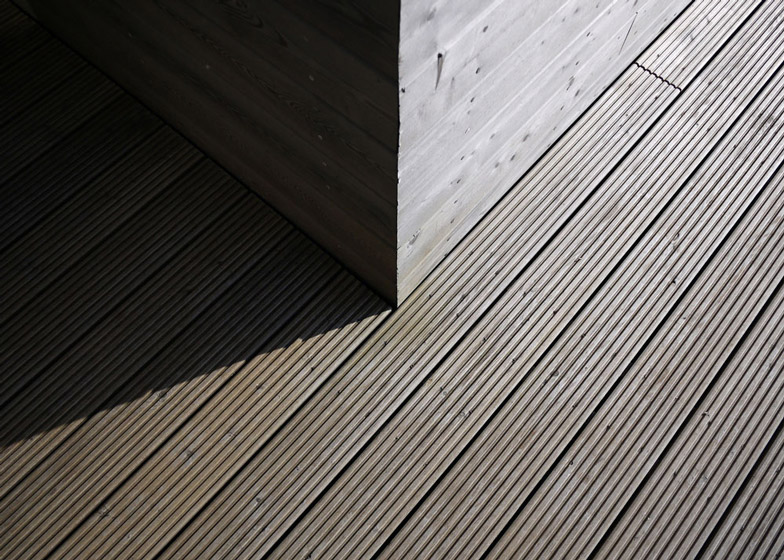Scottish firm Dualchas Architects used Scottish stone and larch to build this single-storey house on the Isle of Skye (+ slideshow).
Named Borreraig House, the part-time residence was designed by Dualchas Architects for a Buddhist, who inherited a plot of land on the largest of Scotland's Inner Hebrides islands.
"The intention was to create a calm, contemplative space for our client to escape the city and spend time with his friends," said architect Neil Stephen.
The house is divided into three rectilinear blocks, each with a simple gabled roof. Exterior walls are clad with horizontally arranged larch panels, which sit flush against the edges of the corrugated metal roofs.
"Materials were chosen which were found in the surrounding landscape - metal from the galvanised gates, larch from the fence posts and stone from walls and fanks," said the architect.
The first block contains a continuous living space that can be subdivided into a study, kitchen, dining room and lounge, while an adjoining second block accommodates a pair of bedrooms and a utility room.
A smaller third building sits off to one corner, creating a studio for quiet work and study.
Oak-faced plywood lines walls and ceilings throughout the house, and Scottish stone was used for the floors.
Photography is by Andrew Lee.
Read on for more details from Dualchas Architects:
Borreraig House, Glendale, Isle of Skye
This multi-award winning house has been inspired by the vernacular Scottish blackhouse, but abstracted in to modern architecture. The client inherited the croft from his mother, and he wanted to build a home that connected with the landscape and the local heritage.
It is a house built for a Buddhist in a deeply Presbyterian part of Skye. The religions share a sense of dignity, quiet and respect. The intention was to create a calm, contemplative space for our client to escape the city and spend time with his friends.
The first decision was to keep the building low to the skyline. This was done by breaking it up in to three separate elements: the living accommodation, the bedrooms wing, and a studio space.
A natural bowl in the landscape was turned in to a lochan by damming the out-flowing burns - this became the focal point of the views and was intended to increase the sense of tranquillity. Materials were chosen which were found in the surrounding landscape - metal from the galvanised gates, larch from the fence posts and stone from walls and fanks.
Internally the building has a simple palette of Caithness stone and oak. We took these materials and forms and refined and abstracted them. The larch is used as a rainscreen to give a crisp finish, the Caithness stone has been honed to a smooth surface, the oak panels set out on a 600 grid and the stone walls have been detailed to help create enclosure.
The building is heavily insulated with external shutters as a barrier to the worst of the gales, and an air source heat pump to heat the water. The result is a building which not only uses sustainable technology, it sits low and easily in its landscape, inspired by the local materials and culture.

